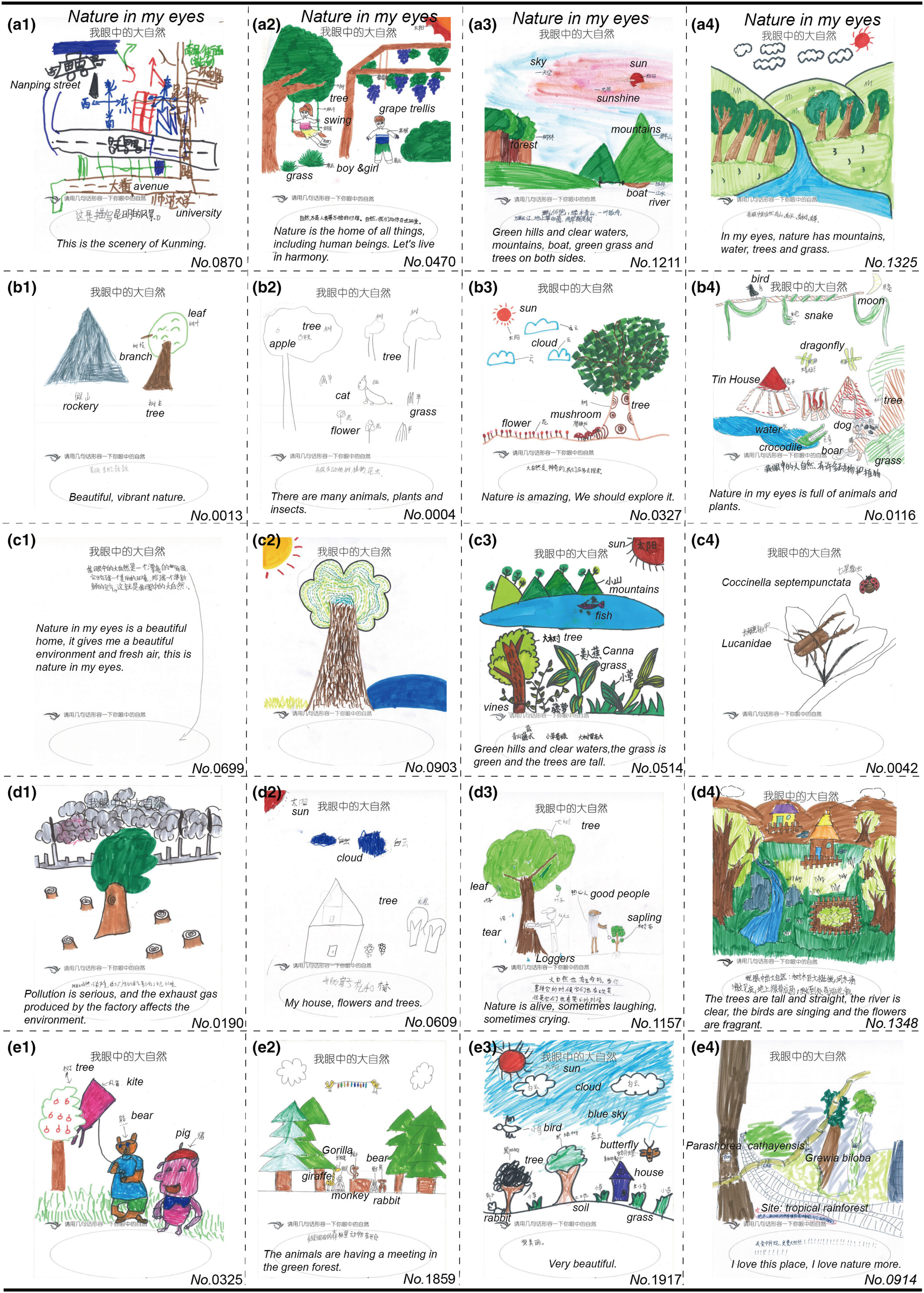Mental representations play a crucial role in shaping attitudes and behavior. Children's representations of 'nature' can be assessed along several dimensions, including aspects such as level of wildness, cognitive complexity, degree of elaboration, emotional expression, and representational style. However, understanding children's representations of nature, especially among preadolescents with limited verbal narrative skills, remains a challenge.
In a study published in People and Nature, Prof. CHEN Jin and his team from the Xishuangbanna Tropical Botanical Garden (XTBG) of the Chinese Academy of Sciences investigated the multidimensional psychological representations of Chinese adolescents of the natural environment and explored how they understand and express information about the natural environment through drawing and writing.
Using a draw-and-write task and a questionnaire survey, the researchers had preadolescent children (aged 9-12) draw their perceptions of the natural environment on paper and write down the ideas and feelings associated with them. Specifically, they examined the effects of direct, indirect, and vicarious nature experiences on preadolescent children's representations of nature in China.
First, they firstly found that children's nature drawings not only share similarities, but also show significant variations: their drawings depict a wide range of living and non-living elements, sometimes including humans. The children's natural representation of children also exhibited significant variation in the degree of wildness, cognitive complexity, level of elaboration, expression of emotion, and style of representation.
They then found that vicarious nature experiences have a significant positive effect on the cognitive complexity, extent of elaboration, and positive emotional expression in children's drawings, while direct nature experiences also have a weaker but still significant positive effect on the elaboration.
The findings highlight the importance of the surrounding environment and nature experiences, especially vicarious nature experiences, in shaping the preadolescents' representations of nature.
"Our study suggests that the draw-and-write mapping method is a reliable and effective way to capture children's natural representations. Chinese adolescents could clearly express their cognitions and emotions about the natural environment through drawing and writing," said CHEN Jin of XTBG.







